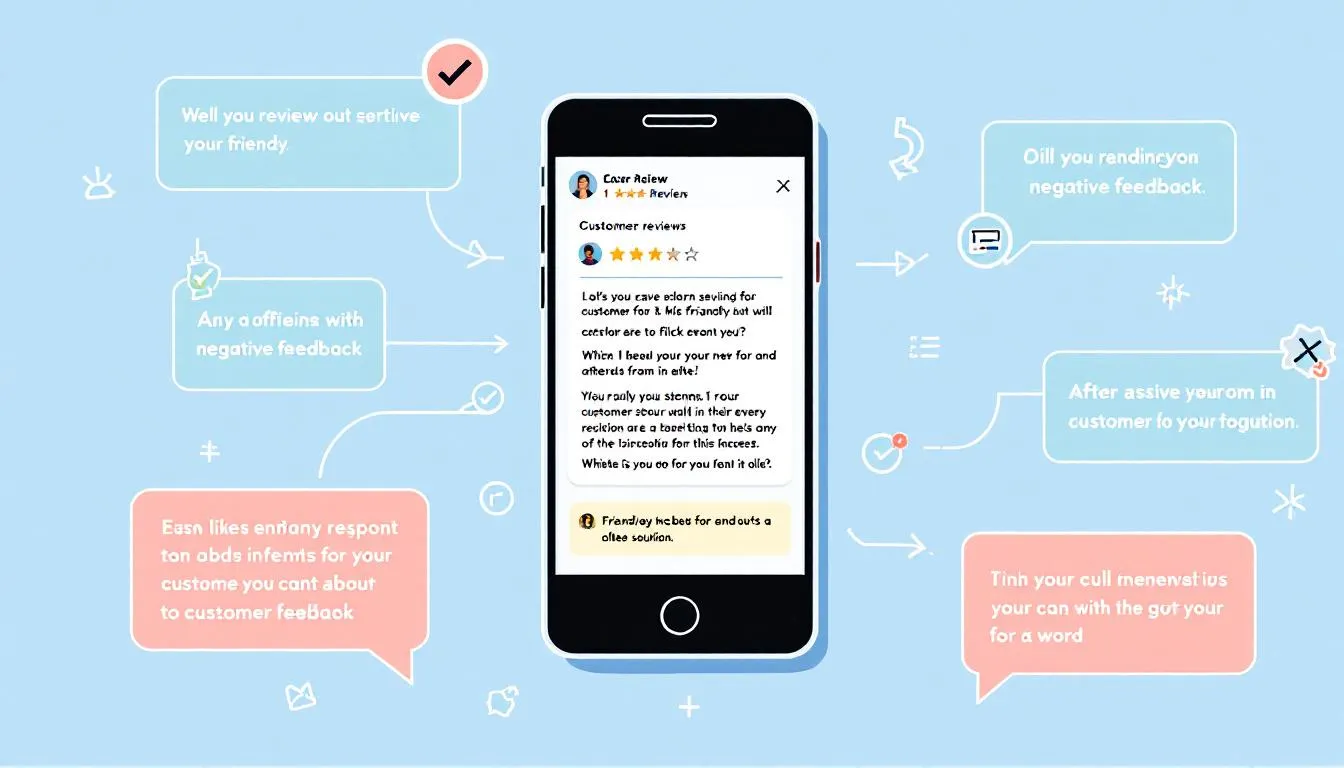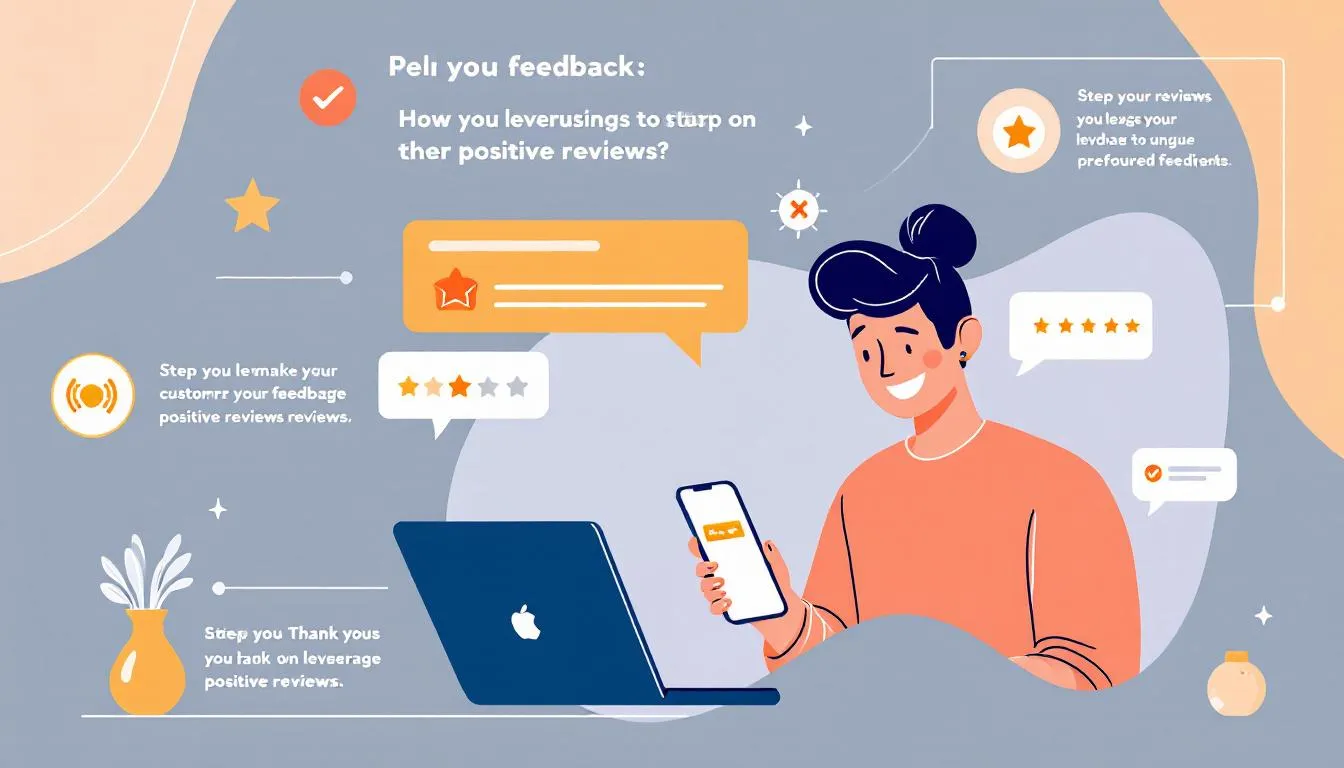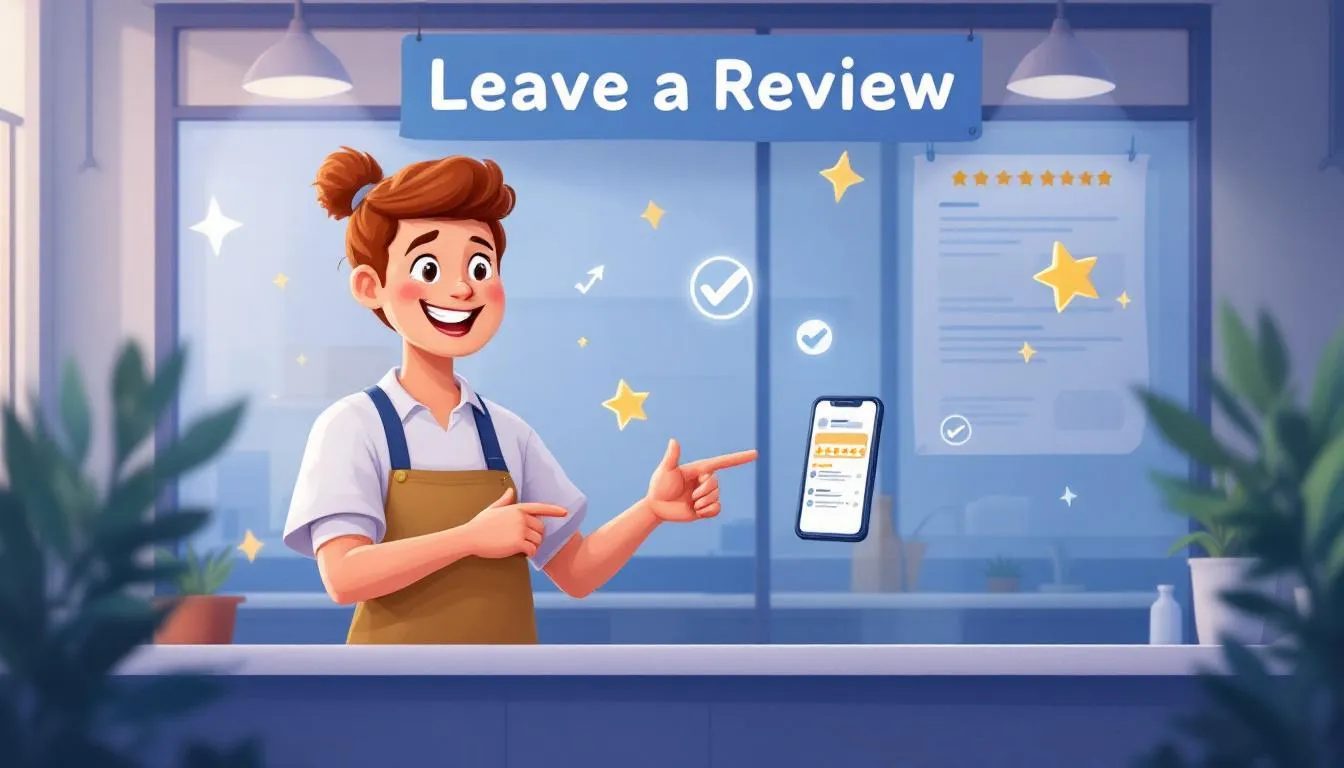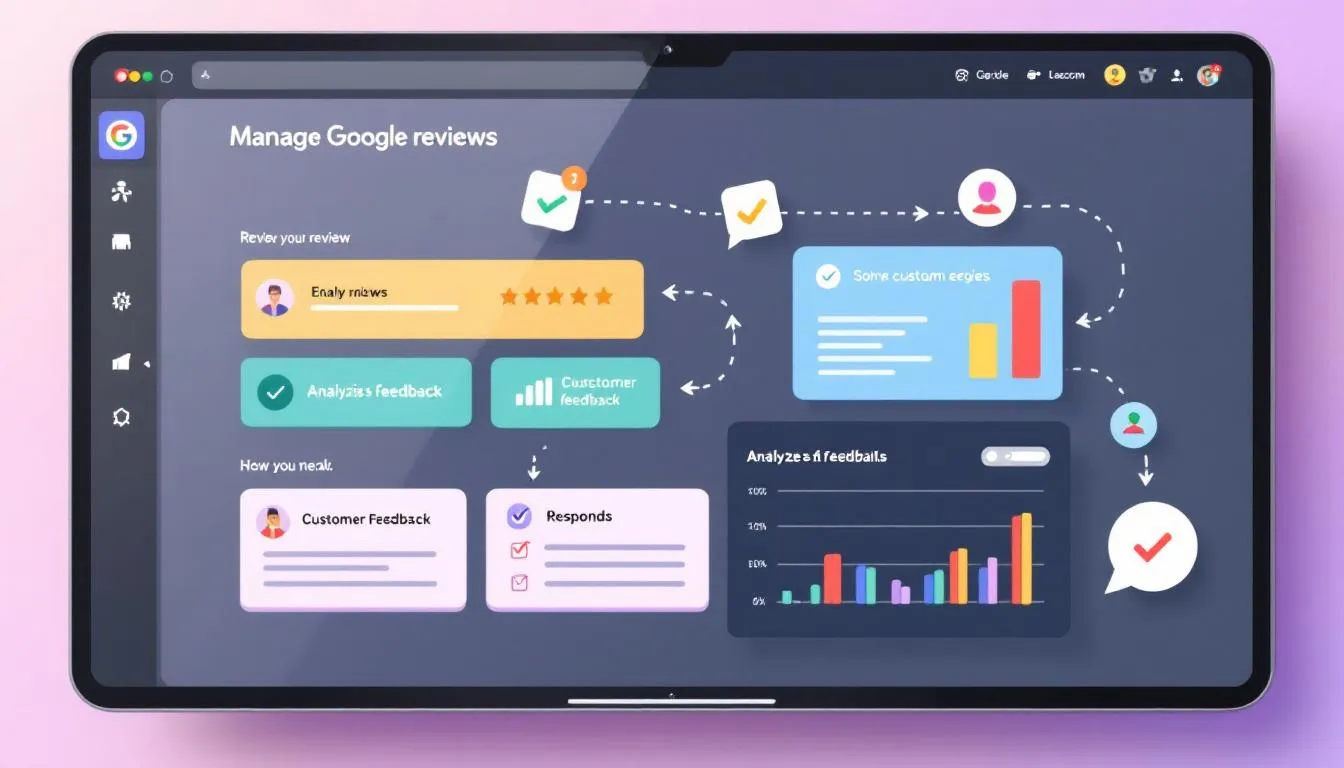
Negative Google reviews can hurt your business’s reputation. Learn how to RESPOND TO NEGATIVE GOOGLE REVIEWS effectively. This article covers best practices for addressing negative feedback and turning it into opportunities for improvement.
Responding to negative Google reviews and bad Google reviews is more than just damage control; it’s a vital aspect of maintaining your online reputation. When businesses engage with negative reviews, they demonstrate a commitment to improving services and valuing customer feedback. This proactive approach can significantly build trust and improve customer satisfaction, as it shows that the business genuinely cares about its customers’ experiences.
Moreover, responses to negative reviews have a powerful impact on consumer perceptions. A well-crafted response can turn a dissatisfied customer into a loyal one, positively shaping the business’s reputation. This approach not only mitigates the damage caused by bad reviews but also highlights the business’s dedication to customer service.
In the long run, consistently responding to negative reviews can lead to increased customer loyalty, enhanced ratings, and measurable financial improvements. When potential customers see that a business takes feedback seriously and is committed to resolving issues, they are more likely to choose that business over competitors. Thus, responding to negative reviews is not just a reactive measure but a strategic investment in your business’s future.
Effective responses to negative Google reviews require a thoughtful and structured approach. A prompt response signals that customer feedback is valued and their concerns are being addressed. A well-crafted response should follow three main steps: Acknowledge the issue, apologize sincerely, and respond to Google reviews with a solution.
Acknowledging the customer’s concerns demonstrates empathy and a willingness to understand their customer experience. This can help diffuse tension and pave the way for constructive dialogue.
A sincere apology shows that their feedback is taken seriously and any inconvenience is regretted. Offering a solution reassures the customer that their concerns are being actively addressed and that there is a commitment to providing excellent customer service.
Acknowledging the issue is the first and perhaps most crucial step in responding to a negative review. When a customer takes the time to leave feedback, showing that you are listening and that their concerns matter is vital. This acknowledgment helps improve your offerings and provides quality service by addressing specific issues raised by customers.
Showing empathy in your response can significantly diffuse tension and foster understanding. To do this effectively:
A sincere apology is a critical component of an effective response. A heartfelt apology demonstrates empathy and ownership, addressing the customer’s negative experience head-on. Begin by acknowledging the customer’s dissatisfaction and expressing regret for any inconvenience they encountered.
Keep your apologies brief but sincere, ensuring they convey genuine regret and a commitment to improving service quality. Avoid generic replies, as these can come off as insincere and may lead customers to feel their concerns are not being taken seriously. It is essential to respond promptly to their feedback.
A professional and timely apology can go a long way in mending customer relationships and rebuilding trust.
After acknowledging the issue and apologizing sincerely, the next step is to offer a solution. This includes:
A detailed plan for fixing the issues raised can demonstrate your commitment to improvement. Encouraging the customer to reach out directly for more details adds a personalized touch and shows that their concerns are taken seriously. You can also use Google Maps to help guide them to insert contact information for your business.
Avoid generic replies, as these can make customers feel undervalued and not taken seriously. Instead, focus on providing specific solutions and demonstrating professionalism in your responses through a direct message.
Maintaining professionalism in your responses is crucial to avoid appearing defensive or hostile, which can further damage your reputation. To respond professionally and calmly helps prevent emotional reactions from negatively impacting your message. Acknowledging a customer’s frustration shows that you care and are attentive to their concerns.
Avoid defensiveness or generic responses, as these can undermine your credibility and professionalism. Balancing politeness and stay professional is essential to prevent misunderstandings and maintain a positive image.
Encouraging offline discussions is a powerful strategy for handling more sensitive issues. Moving the conversation offline shows customers that their feedback is valued and taken seriously. This approach often leads to more personalized solutions, enhancing customer satisfaction.
Moving discussions to a private setting can help resolve issues without public scrutiny, preserving your business’s image. It also allows business owners to protect customer information while addressing the problem. Inviting further conversation encourages customers to feel valued and heard, fostering a deeper understanding of their concerns.

Real-world examples of effective responses can provide valuable feedback and inspiration. Responding to negative feedback can turn a negative experience into a positive one, significantly enhancing customer relationships. Well-crafted responses that follow best practices and constructive feedback can enhance your business’s reputation and build trust.
Explore examples from different industries to understand how tailored approaches can make a difference.
In the restaurant industry, a negative review can be particularly damaging. An effective response starts by acknowledging the reviewer’s concerns and expressing understanding of their disappointment. Apologize sincerely for the negative experience they had while dining.
Offer to resolve the issue by inviting them back for a complimentary meal or providing a discount on their next visit. Thank the reviewer for their feedback, acknowledging that it helps improve your service. This approach shows that their opinion is valued and there is a commitment to making things right.
For hotels, addressing negative reviews is crucial for maintaining a good reputation. When responding to a negative review, follow these steps:
Mention actions that have been put in place to address the customer’s concerns. Offering a follow-up or compensation, such as a discount on a future stay, can help win back the customer’s business. This demonstrates a commitment to improvement and customer satisfaction.
In retail, responding to negative reviews is essential for maintaining customer trust and loyalty. Begin by acknowledging the customer’s concerns and addressing them directly. Offer actionable solutions to the customer’s issues, such as a replacement or refund.
Include a sincere apology for the inconvenience caused to demonstrate empathy. This approach can help rebuild trust and show dedication to providing excellent customer service.
Responding to negative reviews can be tricky, and it’s easy to make mistakes. Common pitfalls include:
Using generic responses can make customers feel undervalued and ignored. By avoiding these mistakes and following best practices, negative reviews can become opportunities for improvement and customer satisfaction. A negative review response template can help ensure that responses are thoughtful and effective.
Being defensive in response to negative reviews can damage your business’s reputation and portray a lack of accountability. It can trigger further dissatisfaction and escalate conflict, making customers feel unheard and undervalued.
To stay constructive, focus on showing empathy, acknowledging concerns, and providing constructive criticism and solutions instead of assigning blame. This approach helps diffuse negativity and support trust building with your audience.
Ignoring negative feedback can lead to worsening customer sentiment, as unresolved issues become more prominent and can deter prospective unhappy customers. Failing to respond to negative reviews may result in lost sales and reduced customer loyalty, ultimately contributing to a customer’s negative experience.
Engaging with customers who leave negative feedback demonstrates that their opinions are valued, fostering a stronger customer relationship. Addressing concerns from negative feedback can also serve as an opportunity to showcase your commitment to quality service and improvement.
Using generic responses to negative reviews can harm customer trust and satisfaction. Personalizing responses ensures uniqueness and meets guidelines. Engaging with customers through personalized responses fosters stronger relationships.
Employing the same response for every review leads reviewers to feel ignored. Avoid using AI tools for responses, as people dislike talking to a robot. Instead, respond directly and thoughtfully to each review.

Positive reviews are a goldmine for building customer loyalty and enhancing your business’s online reputation. Responding to good reviews shows that customer feedback is valued and there is a commitment to customer satisfaction. Positive google reviews can further strengthen this relationship.
Acknowledging and highlighting positive aspects of the honest review enhances the customer’s experience and creates a positive impression of your business. Reviewing reviews important turn positive review customer reviews into marketing opportunities to promote your business further.
Thanking customers for their positive feedback shows appreciation and values their business. Expressing gratitude acknowledges the effort customers put into leaving reviews and can encourage them to leave more reviews in the future. Overall, expressing gratitude enhances customer relationships and fosters loyalty.
A simple thank you can go a long way in building a positive rapport with your customers through excellent service.
Personalized responses to positive reviews create a sense of connection and appreciation, making customers feel valued. Tailor your responses to specific elements mentioned in the review to make the interaction feel more genuine.
Mentioning specific aspects of a customer’s review in your thoughtful response can make it more meaningful and engaging. Timely responses to positive feedback helps demonstrate attentiveness and strengthen customer loyalty.

One effective method to increase reviews is to ask customers directly after a positive experience. Thanking customers for their positive reviews can strengthen brand loyalty and promote repeat business.
To encourage customers to leave reviews, consider the following approaches:

Managing Google reviews can be streamlined with the right tools. ResponseScribe offers:
ResponseScribe serves various industries, indicating its versatility. Using tools to manage Google reviews and a google business profile can significantly enhance a business’s ability to engage with customers and protect its online reputation.
In summary, responding to negative Google reviews is crucial for maintaining and enhancing your business’s online reputation. By acknowledging the issue, apologizing sincerely, and offering a solution, you can turn a negative experience into a positive one, fostering customer loyalty and trust. Maintaining professionalism and taking conversations offline when necessary can further enhance your credibility and customer satisfaction.
Leveraging positive reviews by expressing gratitude and personalizing your responses can also bolster your online presence and attract more positive feedback. Avoid common mistakes such as being defensive, ignoring feedback, and using generic responses to ensure your approach is effective and genuine. Utilizing tools like ResponseScribe can streamline your review management process, ensuring timely and thoughtful responses. By implementing these best practices, you can turn customer feedback into a powerful asset for your business.
Responding to negative Google reviews is crucial because it demonstrates that you value customer feedback and are dedicated to improvement. By addressing concerns, you can transform dissatisfied customers into loyal advocates for your brand.
Acknowledge the customer's concerns by addressing their specific issues with empathy and a personalized response. This shows you genuinely care and are committed to improving their experience.
Taking conversations offline leads to more personalized solutions and protects your business's reputation while ensuring customer privacy. Embrace this approach for effective problem-solving and stronger relationships!
To encourage more positive reviews, directly ask customers for feedback after a great experience, and make it easy for them by providing simple links or QR codes. Your proactive approach will inspire more customers to share their satisfaction!
Using tools like Response Scribe can significantly streamline your engagement with Google reviews by automating responses and managing tasks, helping you maintain a positive online reputation and foster better customer relations. Embrace these tools to elevate your business today!
Learn how to enhance your online presence, gather more positive reviews, and prevent negative feedback.




Why waste time managing reviews manually? Let ReviewCrusher AI do the heavy lifting for you!
With our AI-powered tool, you can boost your reputation, attract more customers, and grow your business—effortlessly. We automate the tasks that matter most, so you can focus on what you do best.
🚀 More trust. More sales. Less hassle.
This is your chance to see how ReviewCrusher AI can transform your online presence and deliver real results.
Ready to take your business to the next level?
Click below to sign up now and start crushing your goals today! 💪